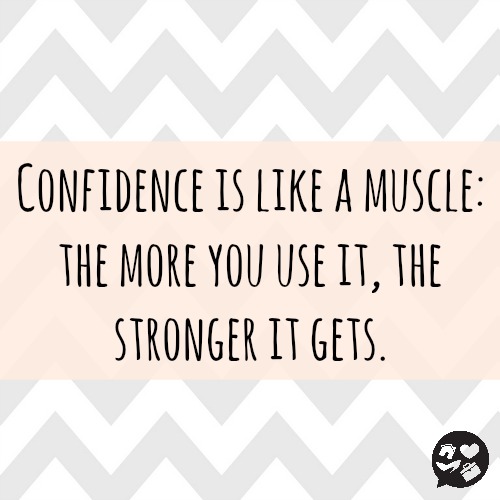4 Methods to Kick Imposter Syndrome Before It Affects Your Career

Social media (and the personal branding phenomenon that keeps it ticking) can make it seem like everyone has it together. In turn, too many young women entering the workforce believe the myth that they must be perfect. Instead of letting their guards down, they put on airs and hope no one sees through the façade. And why shouldn’t they? They’re encouraged to “fake it until they make it.”
If this sounds familiar, know this: You don’t need to have all the answers. No one does — not even the CEO who’s been with a company for 20-plus years. In fact, faking it can be detrimental. Not showing vulnerability reduces your overall effectiveness. Faking it creates more doubts, which further erodes confidence. It’s called the imposter syndrome.
Why Women Play the Imposter
As a leadership coach, I’m privy to the thoughts and feelings of leaders in myriad fields. Regardless of person, leadership style, or industry, it seems everyone struggles with imposter syndrome on some level. We especially feel this during periods of growth. In facing times of uncertainty, we wonder, “Should I be here?”
This is natural. What matters is how we handle those thoughts and feelings.
I have an interesting example of this: Last summer, both men and women competed in the cowboy shooting competition at the Iowa State Fair. Men on horses rode past a row of balloons, shooting at each as they flew past. Women did the same, but their pace was slower and more deliberate: It seemed they needed to slow down, pausing at each balloon, to be sure they hit it. When final scores were called, the men significantly outperformed the women — even after receiving penalties for missed balloons.
This seems to play out in the workplace as well. By avoiding risk and letting our imposter syndrome limit our actions, we remove opportunities to land positions where we can truly shine.

Imposter syndrome is more than self-selectivity or being prudent — it’s self-sabotage.
Whether or not it’s intentional, self-sabotage by women is prevalent in today’s workforce. Recent research from LinkedIn shows that women routinely submit 20% fewer applications than men, yet when they do apply for a role, women have a 16% higher chance of snagging the job than their male counterparts.
Showing our true selves isn’t easy, especially in the workplace. After all, we’re trusting that others will inherently accept us. Admitting we struggle with a certain skill could, in some workplaces, negatively impact our careers. That fear can lead to living a lie instead of projecting confidence in who we are and what we have to offer.
Here’s a solution: Push forward by owning your strengths and unique approach. If you and your inner imposter are ready for change, here are four ways to do it:
Build confidence by knowing, embracing, and using your strengths.
The best investment you can make is understanding your top 10 Gallup CliftonStrengths (discovered after taking a simple assessment). Why? When you use your strengths in your career, you’ll discover 10% higher productivity, greater effectiveness in how you do your job, and a deeper sense of enjoyment at work.
Intentionally aiming our strengths at a challenge allows us to conquer it in ways that feel natural, which means we aren’t faking it. In turn, we gain confidence from seeing how we can contribute effectively to a team or project.

An action plan can help: When you get a new task, ask yourself, “Am I conducting due diligence from all angles and playing to my strengths?” Then, look at your top talent themes and see how they can be combined to do the task well. You’ll position yourself to look at every problem through your strongest lens, filling in the gaps as needed.
Drop the pretense.
During my first decade of teaching as an adjunct professor, I definitely experienced imposter syndrome. I didn’t hold a doctorate like other professors, so I tried to compensate by being the “perfect professor” — stoic, serious, and guarded.
In 2011, I endured some rough personal challenges and decided to let my students in on what was happening. I dropped the pretense and acted as only myself; it made a radical difference. It became a bonding opportunity as my students opened up in ways they never had, and I became more than a teacher: I was a coach, a mentor, and even a friend.
It’s surprisingly powerful to admit your weaknesses. As you drop your guard, others will, too. As others learn about your values, motivations, and intentions, they become more willing to trust because they understand why you do what you do.

Own what you don’t know.
People with experience know you don’t have all the answers — when you pretend you do, you lose their respect. Own what you don’t know, then take action to fill the gap.
Don’t wait until you’re in over your head to seek advice. Learn from others around you and discover what’s been done previously. Unless you’re working in a toxic culture, peers will want to help. Just be sure you seek help in a way that respects others’ time.
When I was asked to present at the Amplify Conference, the largest evangelism training summit in North America, I realized I wasn’t familiar with the crowd. Instead of pretending I was (or simply winging it), I asked somebody with decades of experience for advice. He suggested I admit my lack of experience working in churches and with ministry organizations.
So during my breakout session, that’s exactly what I did.
I told participants I didn’t know their world. I followed by suggesting that my experience coaching and consulting in the business world did, in many ways, have helpful parallels. After all, leading people is hard no matter where you work. Not only did my candor set me up to win the crowd’s trust, but audience members were also receptive to my ideas. In fact, one leader used the concepts with a nonprofit board that evening and was excited to report how well it worked.
Find your style.
Leaders are relieved to discover there isn’t one way to lead. Finding a way that works for their own personal style is key. We must develop our own styles instead of trying to mimic someone else’s.
Consider this: I’m not at my best giving a structured presentation. Instead, I prefer to work with smaller audiences, develop a loose plan, and regularly pivot based on the audience’s needs. At the beginning of my breakout session at Amplify, I asked, “What do you want to learn?”
Based on attendees’ answers, I deviated completely from my original plan. For me, this was natural. Because I’m self-aware about my capabilities, I didn’t feel anxious about switching gears. In fact, I felt energized knowing I was sharing something meaningful in a way that encouraged participation.
However, I wouldn’t suggest this approach for someone who prefers structure and order because that individual would ultimately feel like an imposter. As you build your leadership brand, it’s important to determine what feels most comfortable (which is often connected to your strengths).
Not long ago, I coached an entrepreneurial leader who struggled to win others over — a strength that Gallup categorizes as Woo. He was concerned his lack of Woo would make starting a new business impossible. And while he could’ve easily gone into imposter mode and pretended to be someone who was strong in Woo, he decided to be genuine instead.
We examined his top Gallup strengths and found he was effective at authentically relating to people. In fact, he tuned in to others’ needs quickly, allowing him to build solid connections in a short amount of time. Combining these strengths into a superpower, he realized he can be influential, just in a different way.
Ditch The Imposter Syndrome
When you’re an imposter, you miss out on the joy of true relationships and validation of the real you. Don’t trudge through your career as an imposter. Sail through it as your authentic, capable self. You’ll find it’s always easier and more gratifying to be you.
This guest post was authored by Loriana Sekarski

Loriana Sekarski is founder and president of BONSAI, a consulting company that transforms leaders (and businesses) into the best versions of themselves. As a leadership coach, Loriana teaches leaders how to hone soft skills, spur workplace engagement, and achieve untapped levels of potential. Outside of BONSAI, Loriana serves as an adjunct professor at Washington University’s graduate student program. Additionally, she’s fine-tuning her passion project, TakeFlight, a division of BONSAI that encourages organizations, churches, and marriages to boldly live out their purpose by leveraging their strengths to achieve their God-given destiny.




